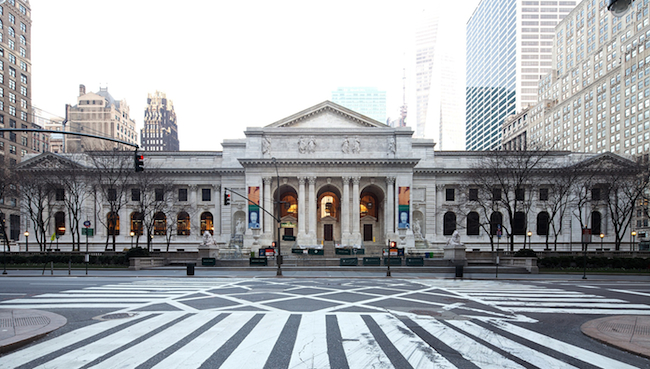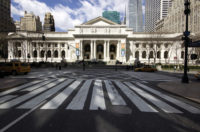
It’s typical for a public institution to announce a big building project with fanfare. But when the same project is dropped, the institution may invoke its right to remain silent.
That’s what happened with a plan to turn part of the New York Public Library (NYPL), at 42nd Street and Fifth Avenue in Manhattan, into a public lending library. Renderings were released in 2012 at a press conference presided over by library president Anthony Marx and the project’s architect, Norman Foster. But when the plan—which would have turned the stacks below the library’s main reading room into a circulating library—was abandoned, the library didn’t say a word. A New York Times reporter learned of the cancellation when she called the library to ask about the project’s status.
Architects, many of whom had protested the plan, expressed relief as news of the reversal spread. Barry Bergdoll, the curator and architectural historian, uttered one word, “Hooray,” then added that the plan would have effaced the entry sequence intended by the building’s architects, Carerre and Hastings. (In 2013, in a somewhat subversive act, Bergdoll, then chief curator of architecture and design at the Museum of Modern Art, mounted a show of the grand libraries of Henri Labrouste, whose work inspired the NYPL stacks.) Others had similar reactions. “It was overdue,” said Gianfranco Monacelli, the book publisher, of the library’s decision. Gregory Wessner, director of Open House New York, said that now that the stacks are being preserved, he hoped that more people would get to see what made them great.
Foster and Partners had already been paid $9 million for its work, including the renderings released in 2012. Those drawings showed a new atrium in a bland, corporate style; making them public may have been a tactical error on the library’s part. The renderings were an easy target for critics, including Ada Louise Huxtable, who, in an article published shortly before her death in early 2013, warned that the library was “about to undertake its own destruction.”
Foster promised to address the concerns, and he reportedly worked with Marx to create a new plan that preserved parts of the cast iron and steel stacks (even conferring with the Bibliotheque Nationale in Paris, which is getting ready to open its Labrouste stacks to the public for the first time since they were installed 150 years ago). But Foster’s revised designs may never be made public.
Now, instead of creating a lending library in the 1911 building, the NYPL will renovate the lending library it already operates at Fifth Avenue and 40th Street. The NYPL has not yet chosen an architect for that renovation, though Huxtable, who seems to be getting her wishes granted posthumously, suggested Foster for the job.
The library plan may have been sunk by the election of Bill de Blasio as mayor. (de Blasio reportedly met with Marx to express reservations about the proposed changes to the city-owned building.) But the effort to stop the plan was multipronged: it included protests by authors, lawsuits by citizens’ groups, and campaigns by architects. Among the most effective organizers was Charles Warren, an architect and the author of a book on Carrere and Hastings, who helped found the Committee to Save the New York Public Library. Reacting to the turnaround, Warren said the battle isn’t over yet. The NYPL has already emptied the building’s original cast iron and steel stacks, and plans to keep them empty, claiming they cannot be fireproofed. To Warren, the real victory will come when the stacks are returned to their original use. “They’re part of the perfect machine that is the 42nd Street library,” he said. “We need to bring the books back.”


Post a comment to this article
Report Abusive Comment